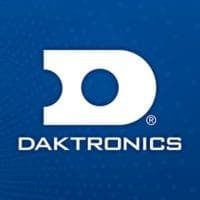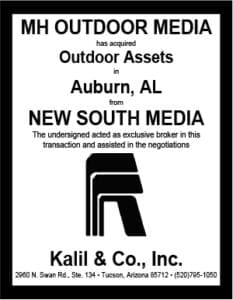At last weeks IBO Conference, we were fortunate to have Jeremy Johnson, Global Business Development Manager for Daktronics on a panel discussion we moderated. Insider asked Jeremy to bring us his thoughts on the supply chain and below is a summation of his comments in what proved to be an interesting and informative discussion.

Where we are:
Presently, the supply chain for electronic components is getting substantially better, but it’s still tricky. We are having to forecast for a really long time on some of the parts we buy. Some of our buyers are dealing with as much as 700 day forecasts for certain components. That is putting a lot of pressure on our Company as we are having to forecast almost two years out.
Parts are one thing, but shipping was also a major contributor to the challenges we were having with parts. This too is getting better. First, there is a lot more air travel between countries. This gives us greater freight availability on the airlines, which is bringing air costs down nicely. Also, ocean freight has gotten a lot better from where it was. Inland shipping is improving but still a challenge as there are not enough truck drivers. We simply need more people doing that work.
Semiconductors have been talked about a lot. There has been about $50 billion invested among current semiconductor fabricators meant to expand their operations, which is important. Additionally, here in the U.S, we passed the Chips and Science Act which provides $130 billion in incentives to promote research and development for semiconductors in the United States. We are going to see the benefit of that in the next 3-5 years. There are big factories being built. A couple in both Arizona, and Texas and one in Ohio. That will be positive for the future supply chain.
Concerns looking forward:
We also have a couple of concerns. One is what is going on in Ukraine. This is terribly sad, and we hope that it gets resolved in a good way. But we don’t know how it is going to be resolved. As a result of the conflict there, we are starting to see some pressure coming into our industry on steel prices. This is very recent with that pressure coming in the last few weeks.

China and Taiwan is also an issue. If China decides to take aggressive action against Taiwan, there will be disruption for sure. One of the reasons China is interested in Taiwan is because they have all this amazing capability and technology. In the event of an invasion, it’s unlikely China will let that fall apart. So those capabilities should sustain. Maybe not in a way that we would want it to, but it will sustain. There will likely be some disruption if there is an action there, it’s just hard to know what that will look like. We are keeping an eye on it.
The other thing is that the labor market is still tight. And when labor markets are tight, payroll goes up and that is putting cost pressure on many things right now.
Our main focus is on the supply chain. We want to diversify and de-risk our supply chain. We tend to like to work with supply partners for long periods of time and build collaborative relationships. We have great supply partners where we understand their quality and capabilities, what they can do for us and what we can do for them. They understand us and we have had good working relationships. That has been very good, but we need back up plans. So, we are bringing on new partners to develop more relationships. This is challenging as we might need different designs for different parts which adds complexity. Another thing it does is it puts a lot of pressure on our quality and reliability testing which is something we take very seriously. This complexity is more work up front, but it sets us up well for the long game.
To receive a free morning newsletter with each day’s Billboard insider articles email info@billboardinsider.com with the word “Subscribe” in the title. Our newsletter is free and we don’t sell our subscriber list.
Paid Advertisement


















Good article.